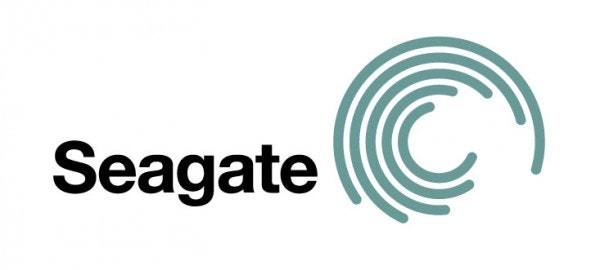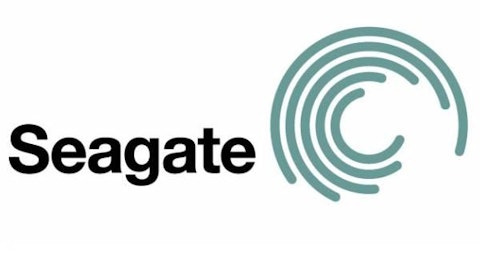I have built a few computers for myself over the years, and I remember when large amounts of storage used to be a significant cost. If it came down to more processing power, more RAM, and a better video card or more storage, I always come to the conclusion that I would just erase stuff. Now you can get a few terabytes for relative pennies. By sheer happenstance, I always went with a Seagate Technology PLC (NASDAQ:STX), but now technology is shifting to the more expensive solid state drives.

Here or there, storage is needed
Even those who are completely aware of the nature of the cloud fall into the mistake of talking about the cloud as if it were some metaphysical product that exists in an incorporeal realm. Even if they do not mean it that way it comes off that way at times. The cloud exists as tangible hardware, but it is somewhere else.
Something to keep in mind regarding storage is that byte for byte solid-state storage is way more expensive than regular HDDs. There will always be a demand for cheaper yet slower storage if it means more storage capacity.
Finally, there are these “new” devices called hybrid drives that combine a regular HDD with a solid state cache in order to improve access times. This is probably a good way to boost performance and lower costs of storage. A full solid state drives should only be used exactly where they are needed due to the costs.
A lot of the recent negativity regarding Seagate Technology PLC (NASDAQ:STX) and Western Digital Corp. (NASDAQ:WDC) stems from their lack of entry into the mobile solid state market. Tablets and smart phones are important, but the cloud is far bigger than those devices. It used to be a hot sector, but has been overshadowed by anything dealing with mobile devices.
Seagate and Western Digital supply the cloud
Both companies do have cloud drives designed to provide the storage that is required over there. Looking at the line of Seagate’s products you see both speed and capacity on offer for cloud systems. Other companies can have their mobile offerings, but I think this is the smarter play. The cloud is getting bigger. Local data even on a smart phone is becoming less important. Apple has iCloud now. That means you can get along with a smaller local drive for your tablet or smart phone.
It makes more sense for Seagate Technology PLC (NASDAQ:STX) and Western Digital to go into the cloud over the devices. The cloud is the real shift in the technology. Smart phones and tablets will simply be the gateways we use to access the cloud. No one told Seagate’s revenue or Western Digital’s revenue that it is headed for obsolescence. Perhaps analysts are just calling it early, and the company’s will sit around twiddling their thumbs until their demise. I think they are just taking a different tack.
Seagate also offers you a dividend yield over 4%. I don’t expect Seagate Technology PLC (NASDAQ:STX) to meet anything than a shift with the evolving market. The company has net margins over 13%, net income ttm over $3 billion, and over $4 billion in operating cash flow ttm. Since it makes its own drives, it is not surprising that its debt-to-equity ratio approaches 1. All in all it looks like a very healthy companywith a PE ratio below 5. Seagate deserves serious consideration.
For the same reasons Western Digital Corp. (NASDAQ:WDC) deserves consideration. It does have lower margins at around 8% and a lower yield at around 2%. Net income ttm is around $2 billion and operating cash flow ttm is around $4 billion. Mix in having a lower debt, and it is another company with great operations. The lower debt also gives the company more flexibility if it needed to respond quickly to a technological shift. Its PE is 6, which is still low. I prefer Seagate Technology PLC (NASDAQ:STX) since it seems more undervalued with a higher dividend yield and better net margins.
Diversifying with mobile drives
Just because I feel that mobile does not rule the entire universe, does not mean it should be ignored. SanDisk Corporation (NASDAQ:SNDK) makes the solid state drives that goes into smart phones and tablets. SanDisk Corporation (NASDAQ:SNDK) is aggressive about solid state drives, and it expects those to be theprimary driver of growth over the coming years.
The recent run up on SanDisk Corporation (NASDAQ:SNDK) has taken its PE to 33, which is understandable given the heat surrounding solid state drives. The company earned its jump by reporting solid earnings at the end of 2012, but 33 seems kind of high. Sandisk offers no dividend, and revenues have seen a decline as of late. Once a bottom sets in the company can start rising on sales of solid state drives. With a multiple as high as SanDisk Corporation (NASDAQ:SNDK)’s I would keep a minimal position.
Conclusion
I am not so quick to write Seagate Technology PLC (NASDAQ:STX) off to its death as some others. I do not think solid state drives are the only future. Hybrid drives are an interesting turn, and I think that will end up being an important part of all the cloud storage. Solid state drives will be needed when extremely fast seek times are needed such as with microservers. That is because the microservers are designed to quickly find information that is in small pieces and requires little processing power to execute.
Sending a streaming movie does not require a super fast drive, because the movie only needs to be delivered at viewing speed or slightly faster. The time it takes to find the movie on a large drive is acceptable given that the trade off would be a smaller, more expensive drive. The hybrid drives are more likely to become the standard for bulk storage, with solid state drives being used strictly for the quickest access. If solid state drives are not subject to the hard physical limits of regular HDDs and they get just as cheap, then they might eventually supplant HDDs. That is a tall order however.
Nihar Patel has no position in any stocks mentioned. The Motley Fool owns shares of Western Digital.
